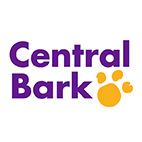Food Quality and Importance
They say, ‘we are what we eat,’ and if it is true for us, it is true for our dogs, too! Knowing how to select a good dog food, how much and when to feed, and how we can control or prevent certain diseases through diet will help our dogs live longer and healthier lives.
Your dog requires a minimum daily amount of six essential elements: water, protein, carbohydrates, fat, vitamins, and minerals. Simply reading your pet food label is one of the best ways to determine the quality of the food you are feeding.
How To Read A Dog Food Label
Reading a dog food label is easier said than done, as labels can be very misleading. Labels are required to tell you eight pieces of information:
- Product name
- Net weight of the product
- Name and address of the manufacturer
- Guaranteed analysis (list of the minimum levels of crude protein and fat and the maximum levels of fiber and water)
- List of ingredients
- Intended animal species (i.e. dog or cat )
- Statement of nutritional adequacy
- Feeding guidelines
Product Name
The product name tells you a lot about the product. The term “beef” means that beef must make up at least 70% of the entire product. The terms “beef dinner,” “beef entrée,” or “beef platter,” on the other hand, only require that beef makes up at least 10% of the entire product. “With beef” only requires that 3% of the total product be beef, and “beef flavor” simply implies that there is enough beef in the product to flavor it (less than 3%).
Ingredients
Ingredients are listed in the order of weight: the largest quantity first, followed by the next largest, and so on. The ingredient list on the label will not tell you the quality of the ingredients or where they came from, and some deceptive manufacturers split up the ingredients to make the distribution more equal. For instance, different types of corn, such as flaked corn, ground corn, or kibbled corn, can be listed separately. This bumps corn down on the list of ingredients, even though the actual content of corn is high.
You always want the first ingredient to be a recognizable protein source (i.e. – “chicken or beef,” not “poultry or meat”). You also want a “meal” of some kind (“beef meal” or “chicken meal”) to be one of the top three supporting ingredients. Meal means they also grind up the bones and cartilage of the animal which provides important nutrients that dogs need to stay healthy. While by-products mean that they also include things like feathers and beaks which have little to no nutritional value to the dog but add weight to keep those ingredients near the top of the list. And that meals are actually healthier than just say, chicken breast, because of the added benefits bones & cartilage have for a dog’s diet. Potatoes, corn, wheat, and soy are common, inexpensive fillers utilized by manufacturers. Ideally, these will not be one of the first 5 ingredients in your food selection.
Feeding Instructions
Feeding instructions or guidelines are included on almost every bag and most cans of pet foods. These guidelines give the recommended amount to be fed based on growth level and weight. As a reminder, these are very rough guidelines. Every animal has a different level of activity, metabolism, and ambient environmental temperature. Speak with your vet to determine what is right for your dog.
One of the first things you should look for on a label is the statement “complete and balanced.” This is more than just advertising – the Association of American Feed Control Officials (AAFCO) has strict requirements to make sure that a product is in fact complete and balanced. Complete and balanced diets must contain the minimum amount of all of the nutrients necessary for dogs, which is also indicated in the “guaranteed analysis.” This analysis gives the minimum amount of crude protein and fat, along with the maximum amounts of water and crude fiber.






